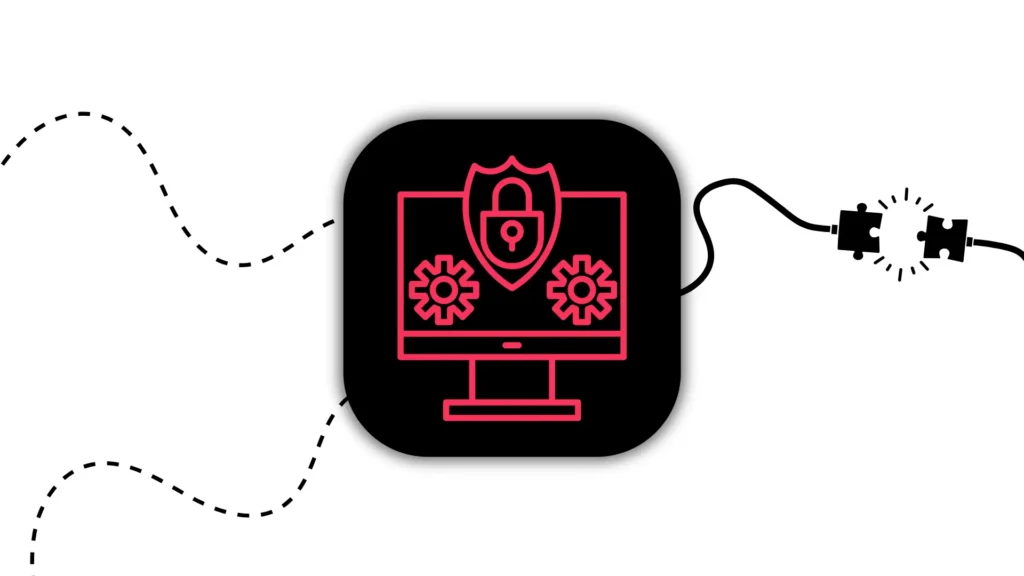AI.
Probably the two, stand-alone letters that made the most headlines in 2022. The only two letters that snatched a buzz-word status without it being removed from its original meaning. In other words, AI is not just a fancy word – this AI buzz is actually doing what it was supposed to.
“Is actually doing” is the watchword here.
Long before we get lured into mulling over our future with AI, we should first take a close look at how it’s being applied right now. This moment. Why? – There are lessons to be learned. Lessons that perhaps can nudge your company to take a step forward.
Artificial intelligence is already changing industries. It’s already changing the way we do business across a multitude of sectors. AI is applied in tech, commerces, medicine, manufacturing, energy, life sciences… It’s even used to make perfumes and coach non-league football clubs. Your kids – their schoolmates and teachers too – are already well-acquainted with the miraculous ChatGPT that does their homework for them.
The bottom line, it has already sneaked into our lives. Business-wise – AI systems have opened up a wealth of opportunities; have accelerated growth in many startups and well-aged companies; and are helping companies streamline redundant operations.
The question, therefore, is not about the future. It’s whether you’re slacking behind.
#1 Is AI Helping Companies To Sell More?
The short answer is yes.
The way companies apply AI to score wins in sales varies. The reason is that most sales departments don’t operate on the same level of process maturity. Put in other words, startups and younger companies may still be handling sales ad hoc while other, larger enterprises may be running their operations with sophisticated agile, and customized processes.
Depending on where a company is process-wise determines the way sales departments find AI most useful. Let’s take a closer look at two process levels most sales departments can be boxed into and how they find AI useful.
Ad hoc and informal level
Many companies give their sales reps time and space to do their own thing. Since sales operatives can’t pride themselves on fancying processes – actually they often hate it – companies are struggling to transition into serious process-oriented sales. That’s OK.
AI in this stage can help sales reps – and CEOs who often step in to close larger deals – do the “boring paperwork”. AI helps them stay efficient in their core duty – selling or running a business.
Scanning emails, updating CRM data, migrating notes into a CRM system, updating sales stage after meetings – AI does that. When companies give the technology some time to settle down, sales agents often find it to be the new trick up their sleeves.
In fact, it might even be the way for managers to propel sales reps to realize the importance of having processes in place.
Agile and customized level
On an advanced level, companies embrace streamlined processes and rely heavily on CRM to feed them insights. More importantly, they use CRM systems and BI tools to react quickly or predict market changes.
This is what AI was tailor-made to do. It chews the heavy loads of marketing, sales, and accounting data and spits the predictive analysis. On a regular basis, it supports salespeople to seize opportunities, adjust their proposals and offers, and even implement account-based marketing. One such example is the story of McAfee Enterprise. Their artificial intelligence analyzes cybersecurity threats on their customers’ systems and predicts the aftereffects each threat could carry. The salespeople then go ahead and use AI’s targeted recommendations to proactively contact companies that are in serious danger and need new ways to improve their security. Can you imagine how this real sense of urgency impacts a company’s buying decisions? By large for sure!
#2 The Awe-inspiring Chat GPT
Here’s a little reality check for every company out there.
Has your marketing team taken it up a notch with their creativity levels in recent times? Are your developers a little less stressed and a bit more engaged in their conversations over coffee? Finally, are you too holding a secret that is flying below the radar – you know, about your new assistant?
The chances are, if you’re anything like us – tech lover, open to new ways of doing things, and appreciative of help – you’ve used Chat GPT too. And chances are, all those amazing outputs your team’s producing… Well, this virtual assistant has probably given it a little push.
Chat GPT is also a lot different than any AI solution present in companies. It was never pitched by a third party, enforced internally, or planned to be implemented throughout the exhausting process. It just happened. People found it, they liked it, and before you knew everyone was using it.
And why wouldn’t we? For many years we had Google as our library. A place where you ransack books (articles) to find solutions to your problems. Now, you have your Genie in a Bottle that has read most of those books and can tell you the answer. Yes, we know Generative AI won’t provide the best or the most correct results. But, it’s creative, can change formats, and styles, make images and text, write code, and do art and copywriting for target audiences.
Companies have already reported using Open AI to: write reports that tend to be tedious; parse unstructured data that otherwise remains useless; help complete unfinished code or search through it; improve written English for documents and public relations. There’s more, a lot more. If you haven’t already, it’s time to jump on the bandwagon.
#3 “Hello sir, how may I help you today?”
The last time you read this, it probably didn’t come from a human. Chatbots in customer service are growing at a rapid pace, to say the least.
As much as 80% of consumers worldwide used a chatbot for customer support at some point. According to Salesforce, 23% of customer service companies are using AI chatbots and as much as 31% are planning to onboard them in less than two years from now. This seals it – chatbots are a true new normal in the customer support segment. However, friendly chatting – and in multiple languages – is not the only way AI is being implemented to aid communication with customers. New commercial AI solutions are also doing smart ticket categorization for companies. For example, different teams can search tickets by product features or services and quickly inspect the prevalent feature-related problem most of their users are having. These tools also analyze the sentiment of customer inquiries to determine whether it was positive or negative. It can also do a decent job of analyzing text and based on the analysis branch tickets into: complaints, questions, competitors, requests, etc. A noteworthy utility if you ask us!
#4 Omni-channel Customer Experience With AI
Brinks Home – a less-known Dallas-based smart-home solution – has been struggling to maintain growth and leverage its data over the years. As reported by Harward Business Review, the more popular competitors in Google Nest, ADT, and Ring have taken a seat at the main table with no room for an extra chair.
To spur growth, the company began utilizing AI technologies to improve customer experience on multiple touchpoints. This includes taking steps to optimize service-call scheduling, maximize cross-sell potential from customer reps, and conduct customer outreach for remote system upgrades. By implementing these solutions, Brinks Home made great strides in capturing the enormous amount of data insights accumulated for over 25 years in order to more efficiently identify what will resonate best with customers on each channel.
The first six months of 2021 have yielded incredibly profitable outcomes for the direct-to-consumer (DTC) package size. Not only did average package sizes rise from $489 to $968, revenue per user also increased by over $3, growing from $42.24 to $45.95. This is indicative of a strong overall revenue increase of 9.5%, far outstripping 2020 numbers. David C. Edelman and Mark Abraham, report having supported over 100 leading global companies in their omnichannel personalization efforts. In the span of 5 years, thanks to the personalization attribution, they’ve witnessed their revenues increase from 6% to 10%. They go on to say it’s the reason why companies such as Home Depot, Nike, Starbucks, and JPMorgan Chase are claiming seamless omnichannel experiences reside at the core of their corporate strategy.
#5 AI in Manufacturing
Artificial intelligence is quickly proving to be an invaluable asset for modern manufacturing, offering predictive maintenance and automation, and helping businesses reduce avoidable costs and errors.
In the industrial sector specifically, AI goes even further in helping, such as by predicting breakdowns in production lines, stepping in to prevent human errors, and ensuring reliable quality control and material restocking. It even helps employees get rid of redundant paperwork and other tasks. All while prioritizing safety for human personnel and productivity for business-crucial processes.
As AI technology becomes commonplace in Estonian factories, it will become increasingly important to capitalize on its diverse range of capabilities. Until then, projects like AIRE are making an all-important first step to give industrial companies a well-deserved push. By linking companies with decades of expertise in cutting-edge technology and manufacturing businesses in need of automation, AIRE is making sure the progress goes a long way.
Similar insights

Smart Workflows: AI Tools and Tips for Busy Leaders
16/12/2025
Supply Chain Attacks: Rethinking Third-Party Trust
10/12/2025
Choosing the Right Tech Stack in Uncertain Times
25/11/2025
How to Pitch and Get Your Ideas Approved at Work
12/11/2025
12 AI Cyberattacks That Made CEOs Very Cautious
21/10/2025
14 Books Smart Tech Leaders Are Reading This Fall
07/10/2025
Protect Your Crown Jewels: The Heart of Your Cybersecurity
15/09/2025
How Renown Business Executives are Using AI?
12/08/2025
Think You’re Secure? PEN Testing Will Tell You
15/05/2025
Let the success
journey begin
Our goal is to help take your organization to new heights of success through innovative digital solutions. Let us work together to turn your dreams into reality.